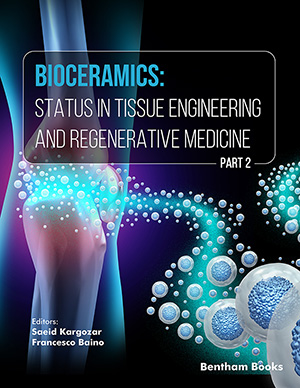Abstract
SHS investigation development is considered from the geographical and historical viewpoint. 3 stages are described. Within Stage 1 the work was carried out in the Department of the Institute of Chemical Physics in Chernogolovka where the scientific discovery had been made. At Stage 2 the interest to SHS arose in different cities and towns of the former USSR. Within Stage 3 SHS entered the international scene. Now SHS processes and products are being studied in more than 50 countries.
Abstract
Bioactive glasses and glass-ceramics are promising materials for both hard and soft tissue regeneration through gene activation mechanisms triggered by their dissolution products. This chapter presents a key property of bioactive glasses and glass-ceramics of growing interest in materials science i.e their antibacterial activity. The main compositions, including composites, with proven bactericidal action, were gathered. The current understanding of compositional effects on the bacteria-killing mechanisms is summarized as well as the main dopants used to enhance the antibacterial activity. Finally, examples of bioactive glass-based products that have being developed for many important applications in orthopedics are presented, such as the treatment of osteomyelitis, coating in metallic implants, the treatment of infected skin wounds, and also in dentistry, in the treatment of oral ailments.
Keywords:
Anti-biofilm, Antibiotics, Bacteria, Bactericide material, Bioactive glass, Bioactivity, Bactericidal activity, Bioglass, Bone, Chronic infection, Diabetes, Glass-ceramic, Implant failure, Osteomyelitis, Skin burn, Staphylococcus aureus, Tissue regeneration, Wound healing.
We recommend

Authors:Bentham Science Books






